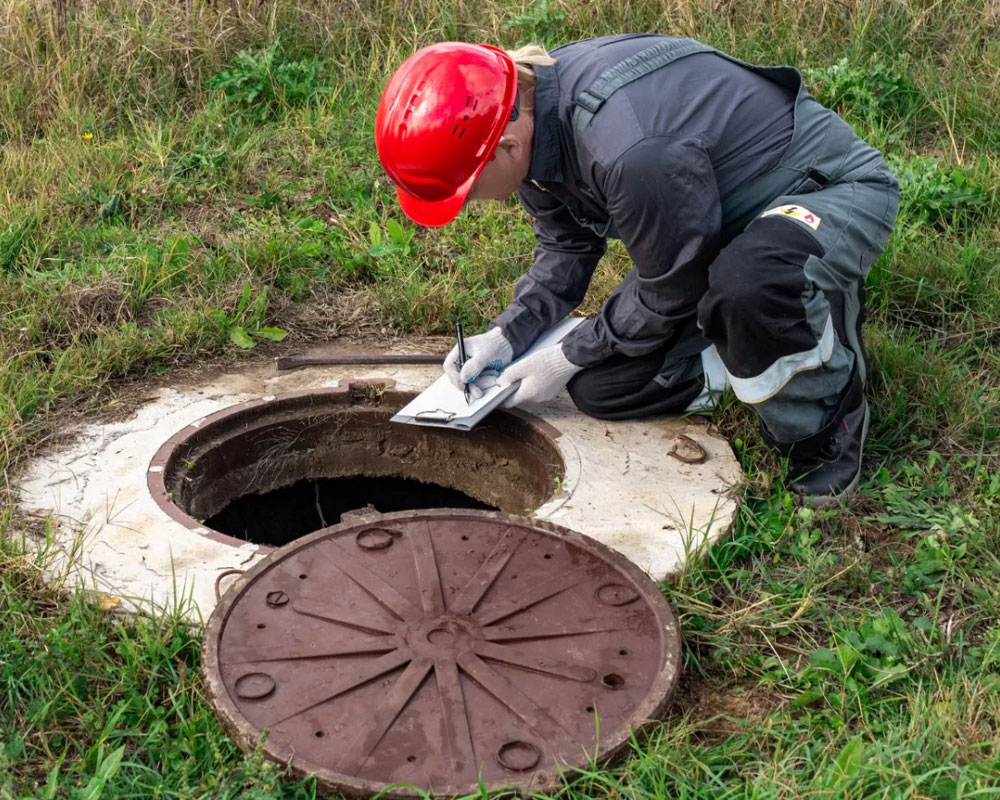
Serving Idaho Counties: Ada, Elmore, Boise, Gem and Owyhee
Septic Inspections near Ada County, Idaho
Atlas Earth Moving is Committed to superior quality and results!

AVOID COSTLY MISTAKES:
Do NOT hire an excavating contractor without first reading our free guide:
The ULTIMATE Excavation & Septic "Success Guide."

Septic Inspections near Ada County, Idaho
Caring for a septic system in Ada County means staying ahead of problems. A septic inspection isn’t just a checkbox for real estate—it’s how you protect your property, your soil, your well water, and your wallet. With the right inspection, you avoid surprises and make smart decisions about maintenance and upgrades.
How Can We Help?


Why Septic Inspections Matter
Owning a home with a septic system brings independence and flexibility. But it also means responsibility. Septic systems in Idaho must handle seasonal soil moisture, protect groundwater, and meet property value expectations.
A proper inspection checks the tank, baffles, drain field, pump components (if present), liquid levels, and overall system performance, ensuring everything is working as it should.
When you catch issues early, repairs are small. When you don’t, costs rise fast.
Benefits of Septic Inspections near Ada County, Idaho
Long-Term Protection
Inspections help identify cracks, missing lids, saturated fields, and clog risks before they turn expensive. Early action = better system life.
Health & Groundwater Safety
Septic failures can affect wells, groundwater, and local waterways. A routine inspection helps prevent contamination in Idaho’s mixed soil conditions.
Confidence When Buying or Selling
In Ada County real estate, buyers expect proof that the system works. A documented inspection builds trust and avoids last-minute deal stress.
Better Maintenance Planning
You learn pumping schedules, needed upgrades, future repair priorities, and estimated timelines—no guessing.
Meet Lending Requirements
Many banks and loan programs require current septic inspection reports. Having one ready keeps the process smooth.
Why Hire Professionals for Septic Inspections near Ada County
Inspectors bring tools, training, and experience that homeowners don’t.
Professional Advantages
Trained to spot problems you might miss
Safe lid removal, ventilation, and internal checks
Accurate locating without yard damage
Flow tests and pump checks were completed properly
Photo-supported reports accepted by lenders and agents
Knowledge of Idaho septic guidelines
DIY isn’t a risk worth taking—especially when your home and groundwater are at stake.
What to Expect During a Septic Inspection
Typical Checklist
Locate tank(s) and drain field
Inspect lids, baffles, risers, and tank condition
Measure sludge and scum levels
Run fixtures to observe system flow
Test pumps, floats, alarms (if present)
Check for drain field saturation or stress
Provide a written, photo-documented report
This isn’t a quick peek—it’s a full performance and safety evaluation.
See Our Excavation & Septic Services

✔️ Residential Excavation
✔️ Swimming pool excavation
✔️ Basement excavation
✔️Residential Sewer And Water Replacement
✔️Residential Septic Installation And Repair
✔️Concrete Preparation
✔️Small Commercial Site-Work
✔️Residential Gravel And Sight Work
✔️ Demolition
✔️ Large pond Construction
✔️ Small Pond Construction
✔️ Dozer work
✔️ Septic inspections
✔️ Trenching
✔️ Utilities Trenching
✔️ Foundation Repairs
Quality Services Launched FAST!

✔️ Septic system pumping
✔️ Septic installs traditional systems
✔️ Septic tanks - aerobic systems
✔️ Septic tanks - Plastic/poly
✔️ Septic tanks - Concrete
✔️ Drain field replacement
✔️ Grading, lot clearing
✔️ French Drains
✔️ Retaining walls
✔️ Sewer repairs
✔️ Drainage systems
✔️ Full site preparation
What Are You Waiting For?
Process for Hiring Septic Inspections near Ada County, Idaho
Step 1 — Gather Information
Address, age of home, last pump date, and past paperwork if available.
Step 2 — Request Scope & Quote
Ask for tank opening, baffle checks, drain field review, pump test (if applicable), filter cleaning, and photos.
Step 3 — Schedule & Prepare
Plan for light water use before inspection and clear tank access.
Step 4 — Attend the Inspection
Walk with the inspector to learn your system layout, condition, and maintenance needs.
Step 5 — Review Report
Expect photos, liquid measurements, maintenance notes, and repair priorities.
Step 6 — Take Action
Follow recommendations and set reminders for routine service.
Pre-Inspection Tips for Ada County Homeowners
Avoid long showers or laundry before the appointment
Clear access to tank lids and components
Share any system symptoms (odors, slow drains, wet soil)
Ask whether a pump-out alongside the inspection makes sense
Small prep steps help ensure accurate results.
Timeline, Cost, and Warning Signs
Typical Time
1–3 hours depending on system type, depth, and access.
Cost Factors
Tank depth
Number of tanks
Pump or advanced system components
Access difficulty
Red Flags When Hiring
Be cautious if someone:
Won’t open the tank
Refuses to take photos
Doesn’t measure solids
Can’t explain Idaho septic standards
Quality inspections are thorough, informative, and transparent.
Ready to Schedule Septic Inspections near Ada County?
A proper septic inspection gives you clarity, protects your home investment, and keeps your system running smoothly in Idaho’s unique climate. Treat your septic report like a maintenance roadmap—file it with your home records, follow the recommendations, and stay ahead of issues instead of reacting to them.
Your home, your soil, and your budget will benefit.
Hours: Mon-Sun 7AM-8PM
Extended hours by appointment only.
Address: 7109 W Northview St, Boise, Idaho 83704
All rights reserved | Client Support Area
Facebook